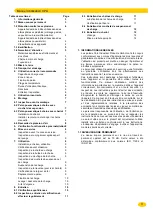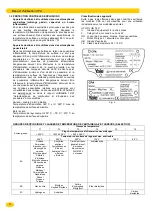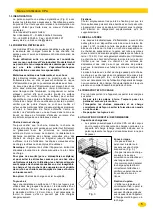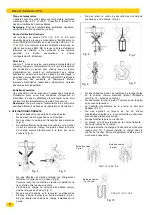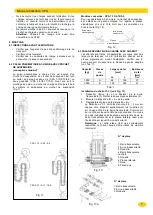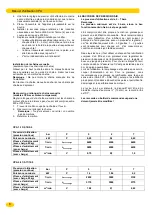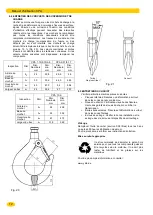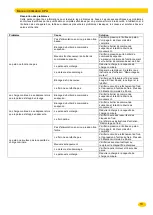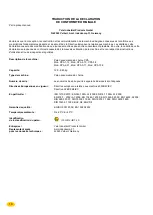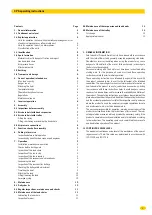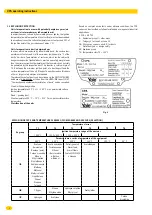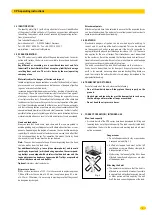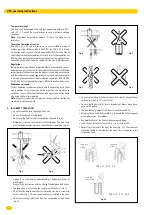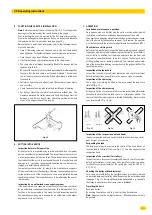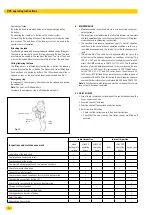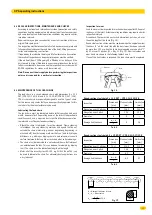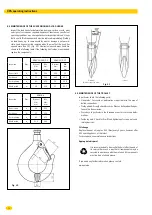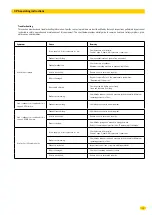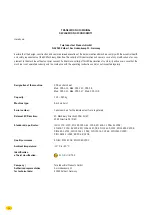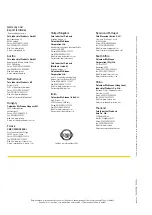
3
CPA operating instructions
Contents
Page
1. General information
3
1.1 Continuous noise level
3
1.2 Explosion protection
4
Units for operation in areas with potentially explosive gases/air or
steam/air atmospheres or inflammable mist
4
Units for operation in dust/air atmospheres
4
Classification of the units
4
1.3 Identification
5
1.4 Spark formation
5
Materials subject to danger of friction and impact
5
Hand and load chain
5
Air pressure hoses
5
Attachment points
5
1.5 Earthing
5
1.6 Transport and storage
5
2. Correct operation/intended use
5
Max. load capacity
5
Danger zones
5
Attaching the hoist
5
Temperature range
6
Theoretical duration of service
6
Regulations
6
Maintenance/repair
6
3. Incorrect operation
6
4. Assembly
7
4.1 Inspections before assembly
7
4.2 Air chain hoist with hook suspension
7
4.3 Air chain hoist with trolley
7
Fitting the trolley
7
Fitting, shortening or extending the hand chain
8
4.4 Air pressure connections
8
5. Function check after assembly
9
6. Putting into service
9
Inspection before initial operation
9
Inspection by an authorized crane expert engineer
9
7. Operation
9
Installation, maintenance, operation
9
Checks before starting work
9
Inspection of the load chain
9
Inspection of the chain stop
9
Inspection of the chain reeving
9
Inspection of the suspension and load hooks
9
Suspending the load
9
Inspection of the crossbar (for trolleys)
9
Checking the trolley width adjustment
9
Travelling the hoist
9
Attaching the load
10
Lifting/lowering the load
10
Emergency stop
10
8. Maintenance
10
8.1 Daily checks
10
8.2 Regular inspections, maintenance and checks
11
8.3 Maintenance of the load chains
11
Lubricating the load chain
11
Inspection for wear
11
8.4 Maintenance of the suspension and load hooks
12
8.5 Maintenance of the trolley
12
Oil change
12
Appropriate disposal
12
1. GENERAL INFORMATION
Yale Industrial Products GmbH hoists have been built in accordance
with the state-of-the-art and generally accepted engineering standards.
Nonetheless, incorrect handling when using the product may cause
dangers to life and limb of the user or third parties and/or damage to
the hoist or other property.
Personnel working with the hoist must have been instructed before
starting work. For this purpose, all users must read these operating
instructions carefully prior to initial operation.
These operating instructions are intended to acquaint the user with
the product and enable him to use it to the full extent of its intended
capabilities. The operating instructions contain important information on
how to handle the product in a safe, correct and economic way. Acting
in accordance with these instructions helps to avoid dangers, reduce
repair cost and downtimes and to increase the reliability and lifetime of
the product. The operating instructions must always be available at the
place where the product is operated. Apart from the operating instructions
and the accident prevention act valid for the respective country and area
where the product is used, the commonly accepted regulations for safe
and professional work must also be adhered to.
The personnel responsible for operation, maintenance or repair of the
product must read and follow the instructions of this manual. The indi-
cated protective measures will only provide the necessary safety, if the
product is operated correctly and installed and/or maintained according
to the instructions. The operating company is committed to ensure safe
and trouble-free operation of the product.
1.1 CONTINuOuS NOISE LEvEL
The equivalent continuous noise level at the workplaces of the operat-
ing personnel is 75 db. This value was determined in accordance with
ISO 11204 and ISO 3746.

